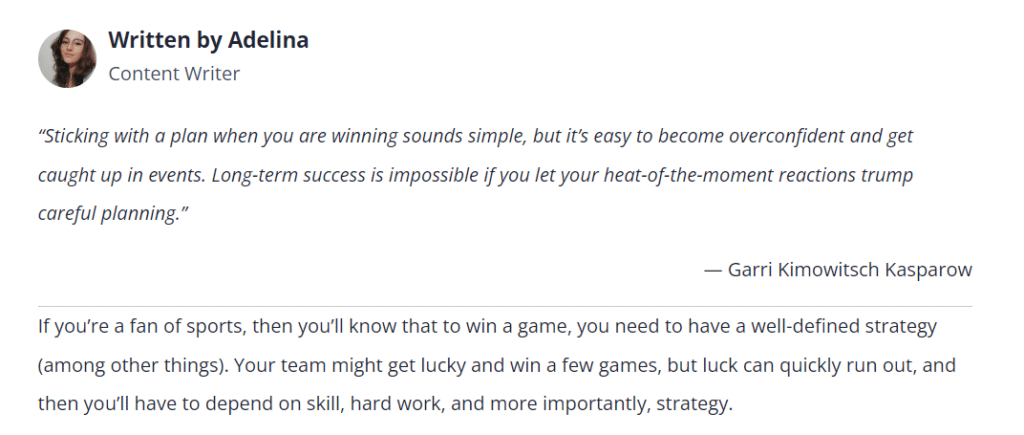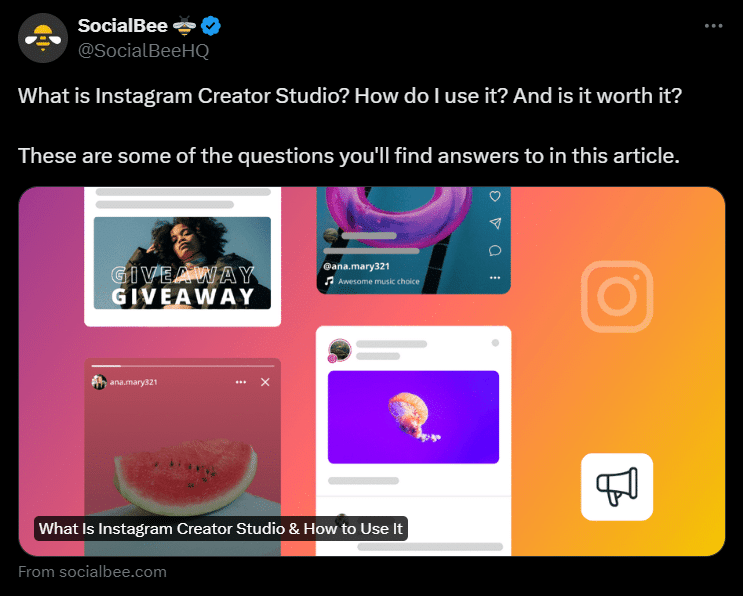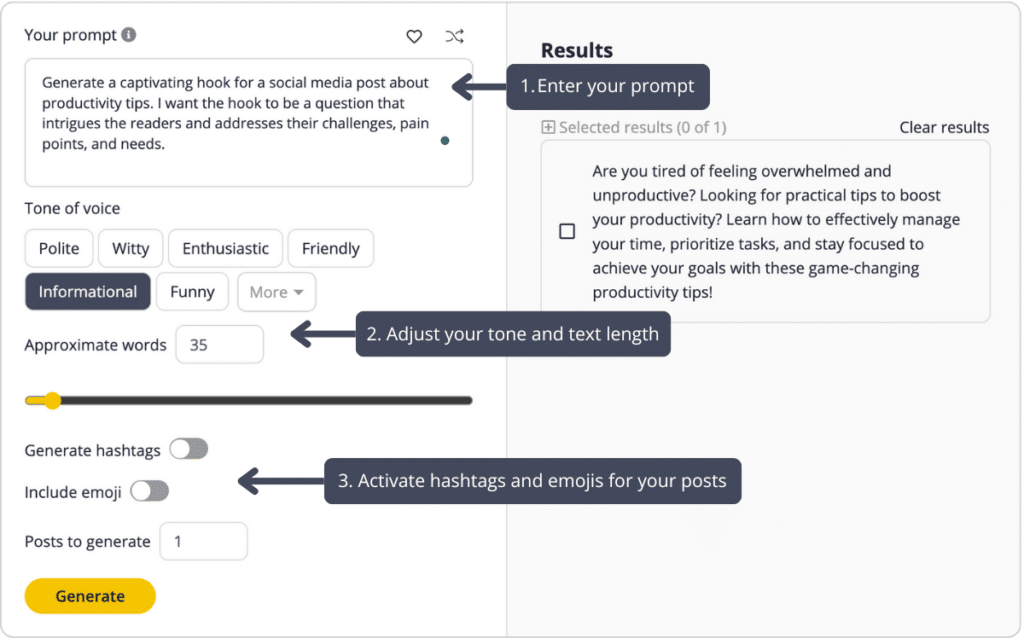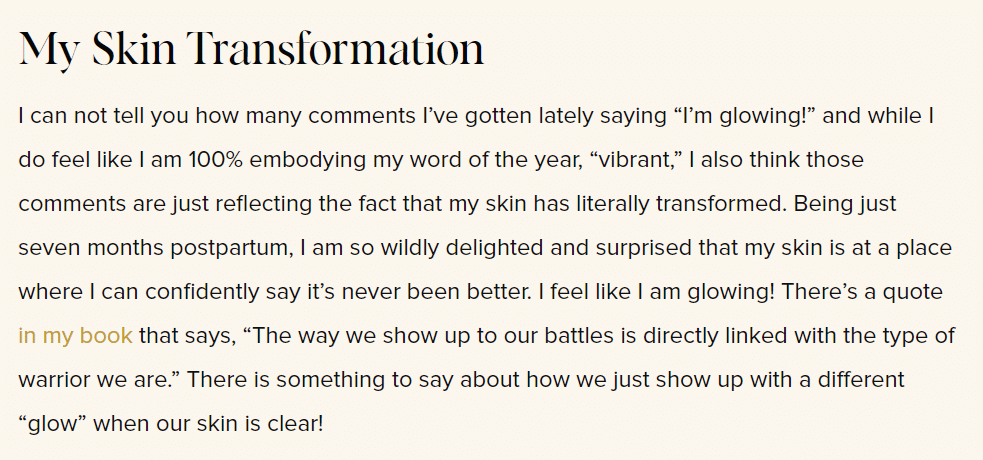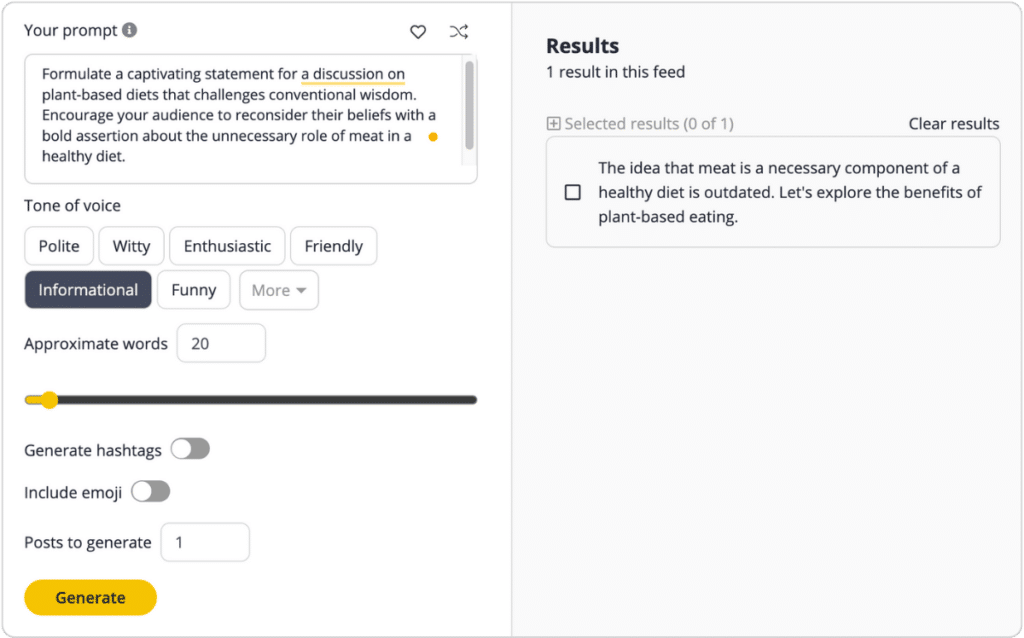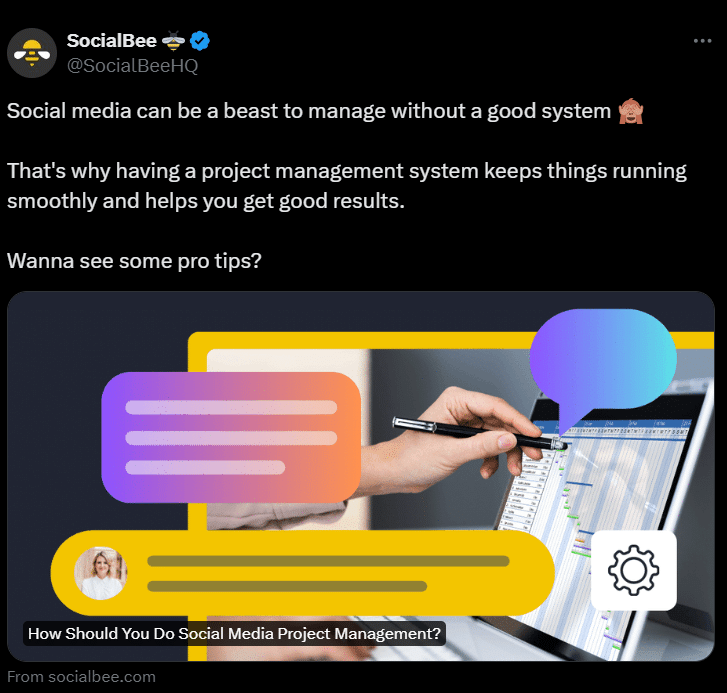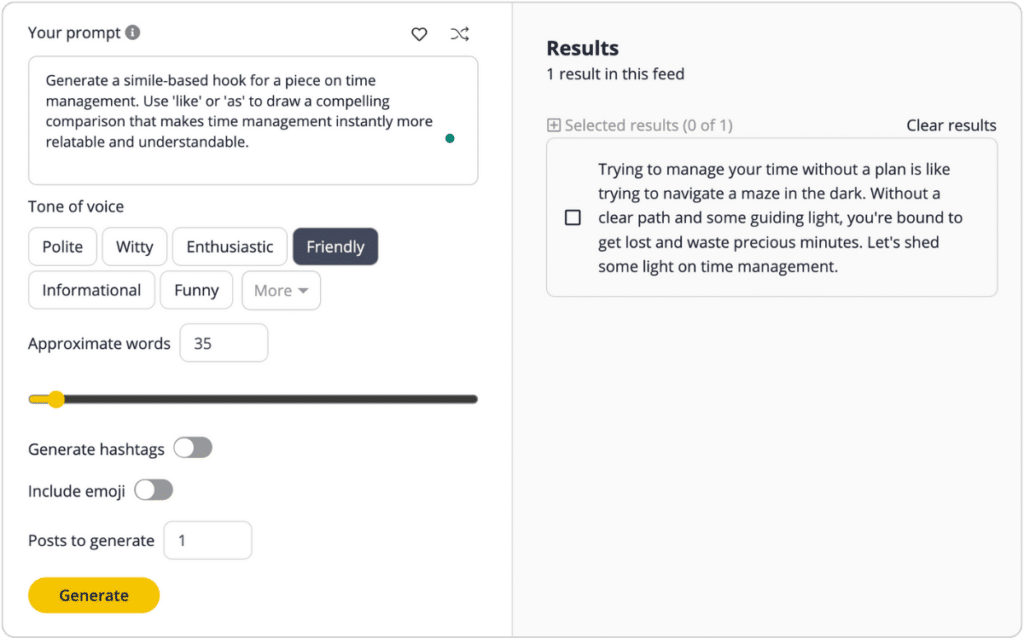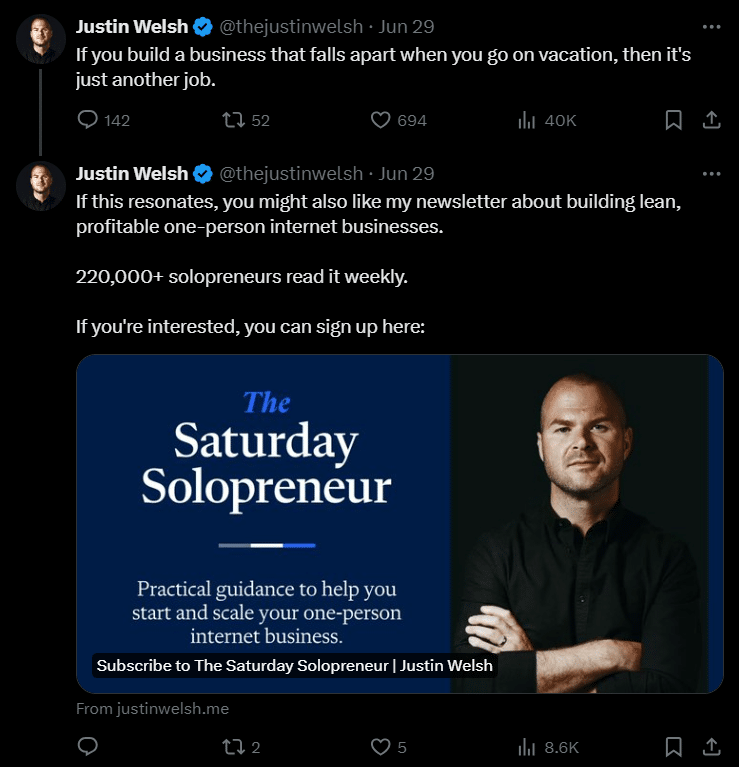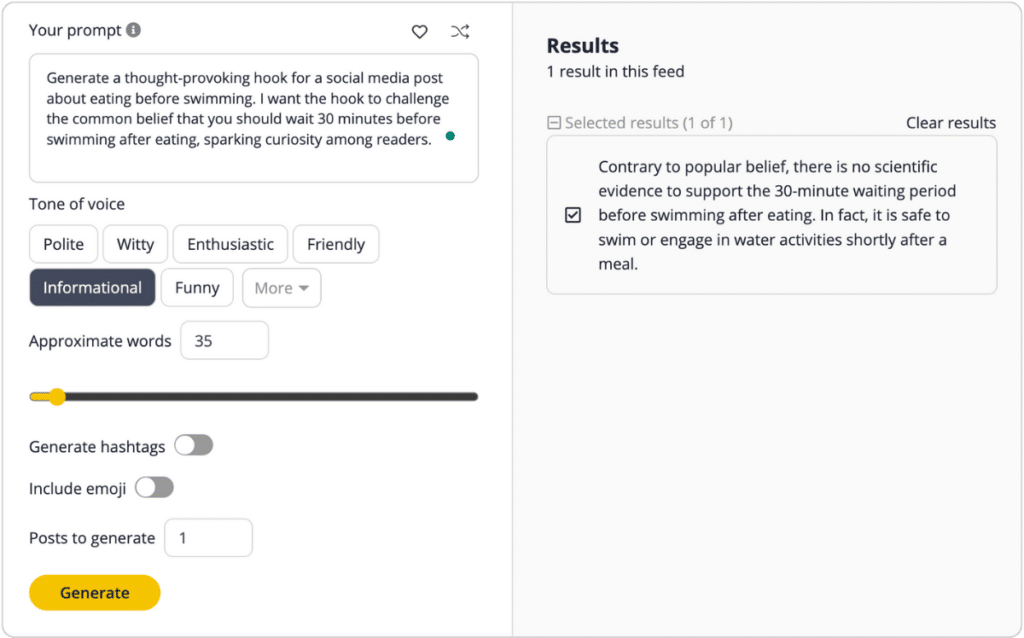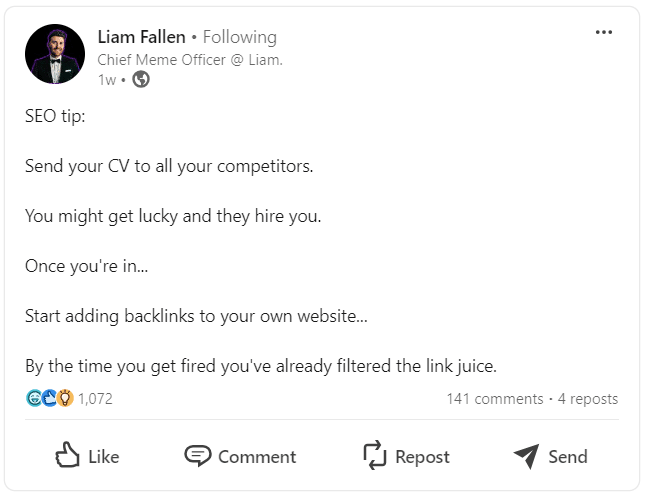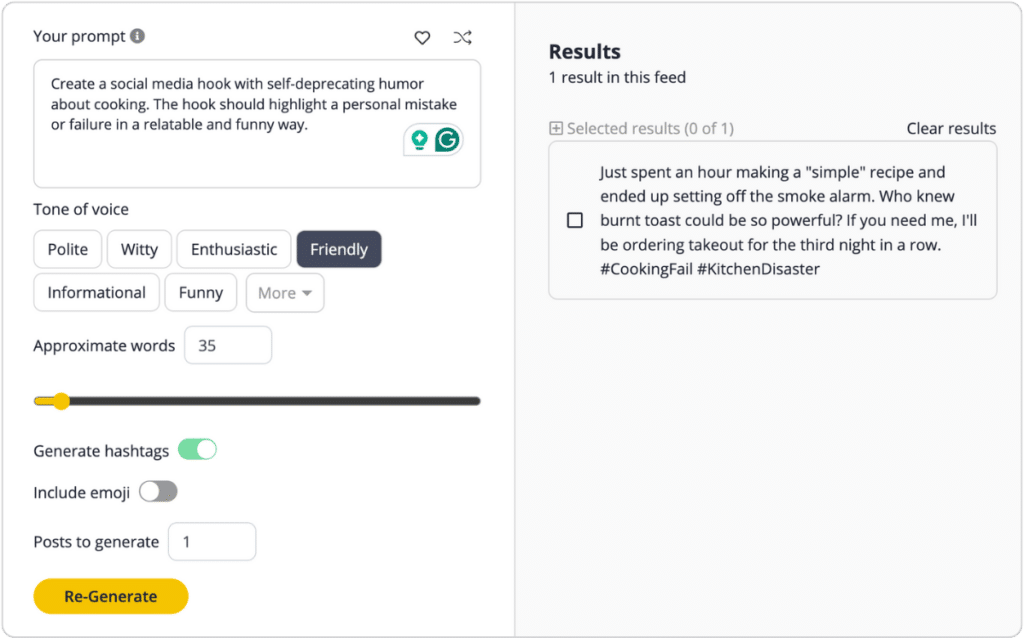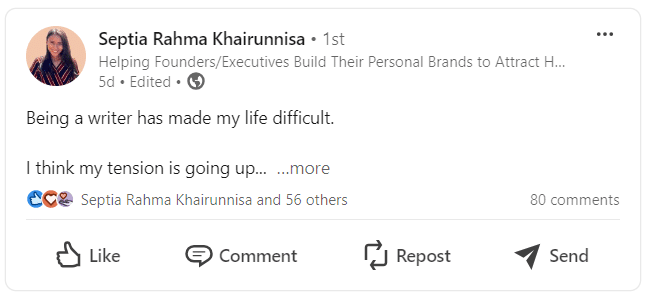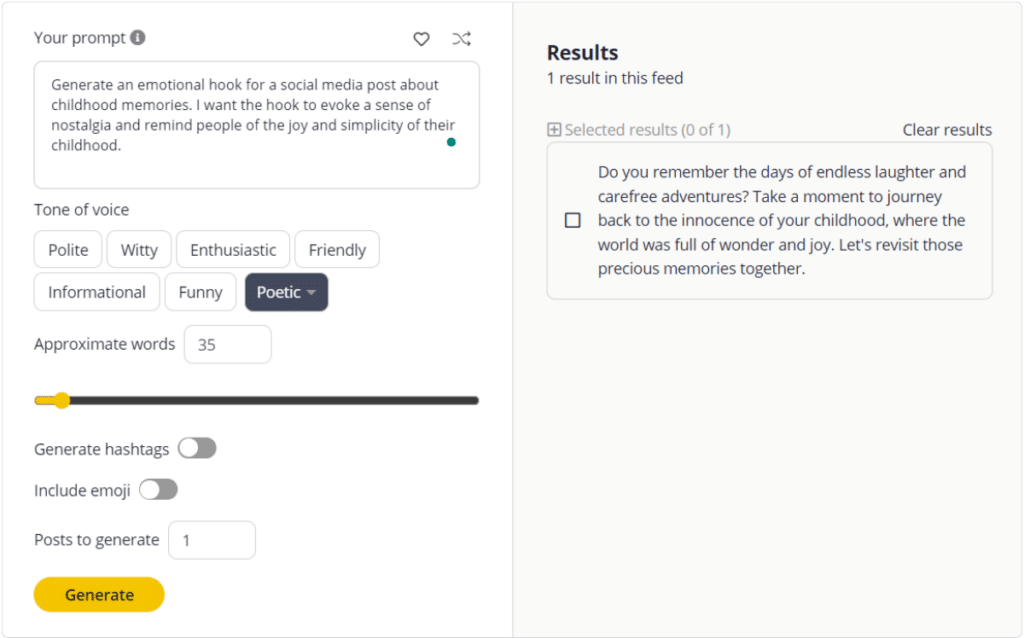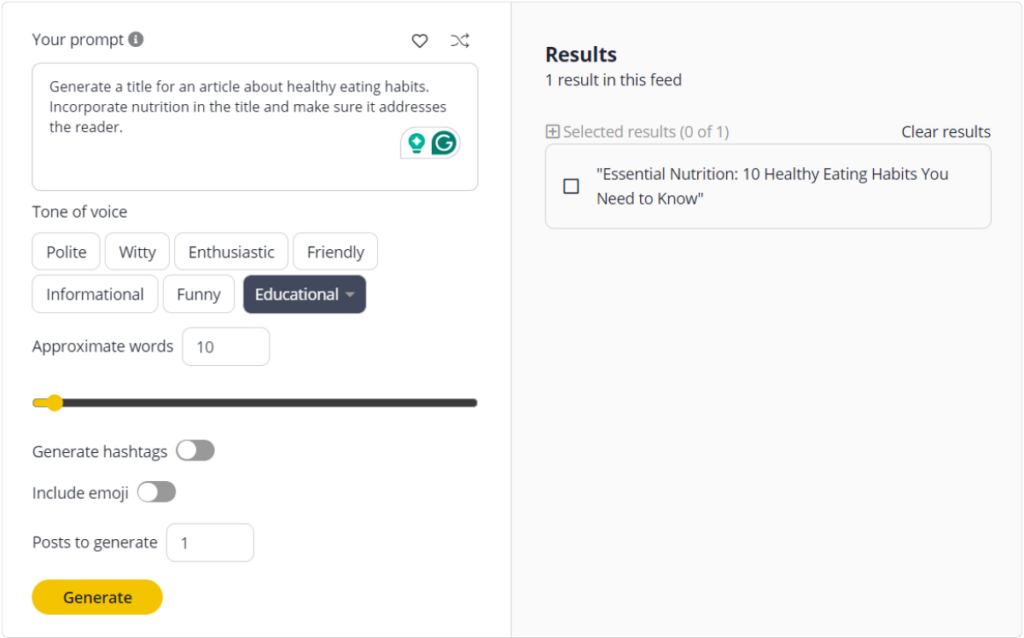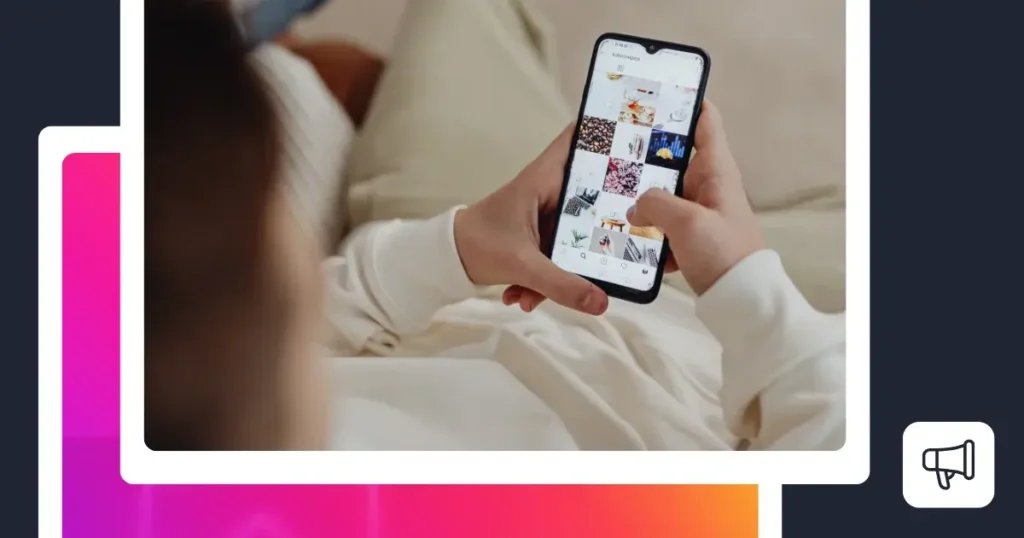
Content Manager at SocialBee
No matter the type of content you usually make, learning how to write a hook is essential for the success of your work.
Adding a captivating hook to your content is like putting beautiful shining lights on a Christmas tree. It may not be more important than the text itself, but it’s the reason people stop and pay attention.
With so many distractions, trying to grab your reader’s attention from the very beginning is quite challenging. But luckily, there are some practices out there that are a guaranteed way to attract readers.
And today we will talk about one of the most important ones — how to write a great hook.
Short Summary
- A hook is an opening statement in the first sentences of a text designed to grab attention and entice readers to keep reading.
- Hooks are crucial for making a strong first impression, and the title is another important element that determines whether readers will give your writing a chance.
- Use credible stats as hooks to engage and inform readers, like “People globally spend an average of 4 hours and 10 minutes daily on mobile devices”.
- Open with an inspiring quote from a well-known figure to effectively engage readers and demonstrate thorough research and credibility.
- Start with an intriguing, open-ended question to spark curiosity and engage readers, encouraging them to read on to discover the answer.
- A personal story can captivate readers and make your writing memorable by creating a relatable and emotional connection.
- Use a bold statement in the beginning of your text to establish a confident tone that will intrigue readers and make them wonder how you support your claim.
- Starting with a figure of speech, such as a metaphor or simile, can intrigue readers by offering a fresh perspective on a topic.
- Beginning with a contradictory statement can immediately capture readers’ attention by challenging their existing beliefs.
- Use humor in your opening to capture attention, make your content more relatable and memorable, and determine readers to engage and share.
- Create an emotional connection in your opening to make readers feel understood and more likely to invest in your content and return for more.
- Crafting an engaging title is crucial for attracting readers, as it sets the stage for your content. Incorporating numbers, action words, powerful adjectives, emotionally impactful terms, address the reader directly, keep it concise, and include the main keyword for SEO.
- AI tools like SocialBee’s AI post generator can generate engaging hooks easily.
What Is a Hook?
A hook is an opening statement represented by the first sentences of a text. There are many types of hooks, but their end goal is the same – to entice readers to keep their attention on what you have to say. A good hook will leave people wanting more.
If you don’t capture readers’ interest from the beginning, chances are, they are not going to continue reading your text, no matter the essay topic or content type.
Why Are Hooks Important?
Similar to how a song hook is meant to catch your ear, a writing hook is meant to make the reader curious. With writing, as with many other things, first impressions are important.
From blog articles to social media content and ad copy, your final goal is to attract and maintain attention to what you have to say. Hooks are important because they are the secret ingredient that can change your written content from easy to ignore to must-read.
How to Write an Engaging Hook: Tips and Examples
Although there are multiple ways you can create an engaging hook, we have chosen the most effective techniques that will not only bring you more readers but will also immerse them into your writing style from the first line.
Here are seven tips for writing effective hooks:
- State a startling fact or a statistic
- Share inspiring quotations
- Add a question hook
- Tell a story
- Make a statement
- Start with a metaphor
- Don’t hesitate to contradict
- Use humor
- Connect emotionally to the reader
- Don’t forget about the title
Let’s improve your writing skills with a few examples of effective hooks guaranteed to keep people on their toes!
1. State a fact or a statistic
Sometimes reality is the most captivating source of information.
Based on the topic you are writing on, you can search for a fascinating fact that will hook your readers and make them curious about your content. To make it work, find a statistic related closely to the point you are trying to make.
For instance, if you are writing a persuasive essay, open with a striking statistic that will surprise your readers and motivate them to educate themselves on the matter.
The most important aspect of a statistical hook is its validity. So, make sure to link to reputable sources and research papers that don’t spread false information. Moreover, by opening with reliable facts, you reinforce yourself as a trustworthy source of knowledge.
Here are some reputable sources you can use to search statistical data:
The fact you choose to present as a hook must be strongly related to the topic you are writing about, and also it has to emphasize your point of view.
For example, if you’re writing a hook for an article about the use of mobile devices, you can start with a statistic from DataReportal like this one:
“According to a 2021 study conducted by DataReportal, the average time spent daily using mobile devices on a worldwide scale is four hours and 10 minutes.”
2. Share inspiring quotations
There have been hundreds of inspiring quotes throughout history from legendary people who made an impact in their field. So why not benefit from their influence and use them as an exciting opening line?
See the hook here: How to Build a Successful Social Media Content Strategy in 1 Month
Using a quotation hook is a guaranteed way to start strong, as you add a saying from an already famous person to your text. It can also show your readers that you are aware of the main personalities that contributed to the evolution of a certain field. And as a result, you gain a sense of appreciation from your audience for doing your research.
The same principles that we applied for statistics are the same we need to consider when choosing a quote. More exactly, the quote needs to:
- Be in its original form
- Complement your body of work
- Bring value to your text
Furthermore, quotes have the power to inspire people and evoke an emotional response from your readers. At the end of the day, this is what any writer wants to achieve through their work, no matter what content they publish.
Let’s say you are writing hooks for a guide about branding. A great way to make use of quotations is to look for influential words from famous figures in the industry. In this case, we chose a quote from Scott Cook, founder of Intuit and eBay director:
“A brand is no longer what we tell the consumer it is. It is what consumers tell each other it is.” – Scott Cook
3. Add a question hook
Starting your text with an intriguing question can spark interest from your readers because you tease a piece of knowledge without actually providing the answer. In this way, you benefit from the curious human nature and determine them to read your work to find out the answer to your initial question.
Moreover, even readers that know the answer to your questions will be interested in your content. Why? Because they want to test and solidify their knowledge.
To make sure you capture the interest of as many readers as you can, avoid yes or no questions, and go for open-ended ones that require a more complex answer.
For example, let’s imagine you have to create an email copy to promote your dermatology clinic. You want to determine your recipients to read your email, so you have to start strong. As a starting point, ask a question your target audience is interested in.
It can be something along these lines:
“What are the three most common mistakes people make during their skincare routine? 50% of our customers are unaware of the habits that negatively impact the health of their skin. And you might be one of them.”
When you’re low on inspiration, use SocialBee to find the right question hooks for your posts. Just give it a simple prompt and it will offer multiple questions for you to choose from.
To get started, use this prompt template: “Generate a captivating hook for a social media post about [topic]. I want the hook to be a question that intrigues the readers and addresses their challenges, pain points, and needs.”
You will get something like this as a result:
Try these AI prompts to generate question hooks for your content:
- “Generate a problem-solving question hook for a blog post about [topic]. The question should highlight a common problem or frustration faced by the audience and hint at a solution provided in the content.”
- “Create a curiosity-sparking question hook for a newsletter on [topic]. The question should tease a surprising fact or an unexpected angle that makes readers eager to learn more.”
- “Develop a debate-stimulating question hook for an article about [topic]. Frame the question in a way that presents a controversial or divisive opinion, prompting readers to reflect and respond.”
- “Construct a fear-appealing question hook for a promotional campaign about [topic]. The question should tap into the audience’s fears or anxieties related to the topic, emphasizing the urgency of addressing the issue.”
- “Craft a dream-fulfilling question hook for a social media post about [topic]. The question should evoke the audience’s aspirations or dreams, linking how [product/service/topic] can help achieve them.”
4. Tell a personal story
Storytelling can bring a magical touch to your texts. It not only attracts your reader’s attention, but it also makes your text stand out.
Starting your article or post with a short story will hook readers and make your writing work memorable. Just think about the most important lessons you learned as a child. Most of them were all tied to a fascinating personal story you never forgot.
An example from Jenna Kutcher’s blog
Even as adults, stories still have an indescribable power over us. That is why the most influential brands have created a narrative around their business. Coca-Cola, Apple, and Nike are some of the most known brands that tell a story through their advertising as a way to create a more important meaning than their products.
You don’t have to write a novel. A short creative paragraph is enough to captivate your audience. The secret is to create a story that makes sense in the context of your article or post and communicates the main point of your text.
You can create a hypothetical situation that you know your audience will relate to or talk about a relevant experience from your life that is tied the message you want to get across.
Let’s say you are a business coach and you want to motivate your small businesses to invest in their future. So, you decide to write an article. To create a connection with them, you choose to start by telling the story of how you became passionate about business coaching.
Here is an example of how it could look like:
“When I first came back from London, after two years of not seeing my family, I was emotional and nostalgic. I just finished my business studies and all I wanted to do was to celebrate with my dear ones.
So, I hurried to my favorite bakery where my family and I used to go every Sunday. But instead of seeing the delicious baked goods that made my childhood magical, I saw an out-of-business sign and an empty shop.
I couldn’t believe it. I was so sad that such an important piece of my community was now missing.
At that moment I realized what I wanted to do for the rest of my life — helping local businesses strive in a society dominated by big chain corporations.”
If you’re looking to turn your personal experiences into engaging story hooks, here’s a simple way to get started. Provide a brief description of your experience, and get suggestions for hooks that bring your stories to life. Just use this starting prompt:
“Tell me about a personal story involving [topic] and [brief description]. Can you help me find a hook that really captures the essence?”
You will get something like this as a result:
Here are some AI prompts you can use to create your story hooks:
- “I have a story about [topic], where I experienced [brief description]. Can you help me create a hook that highlights the emotional impact and makes the story relatable to the reader?”
- “In my experience with [topic], I faced [brief description]. What’s a good hook that focuses on this challenge and draws readers in?”
- “I went through a transformation involving [topic] and [brief description]. Could you suggest a hook that shows my journey or what I learned?”
- “My story about [topic] includes a surprising discovery [brief description]. How can we craft a hook that teases this intriguing element?”
- “I’m sharing insights on [topic] that relate to [brief description]. Any ideas for a hook that connects this to broader, relatable themes?”
5. Make a statement
Starting off with a strong statement can set the tone of your text. By doing this, you establish yourself as a confident and outspoken writer that your readers can trust.
This idea can work as an essay hook as well as an article hook. All you have to do is customize it for the context you are in.
See the hook here: Use This Instagram Growth Service to Grow Your Followers Organically
For a statement hook to work, the rest of your text should resonate with your initial remark. In a way, it’s similar to thesis statement in a research paper — you have to work to prove its validity.
Furthermore, such a hook can have a polarizing effect on your readers. Some of them will disagree, and others will share your opinion. But no matter their views on the topic, they will be intrigued by what you have to say. Either to validate their reasoning or to see how you support your claim.
Let’s imagine you are writing a hook for an article about why businesses should develop a social media presence.
You could begin with a statement like this one:
“Social media is the most significant part of your marketing strategy”
If you’re searching for a fresh way to engage your audience with bold and powerful statements, try using AI to create impactful hooks for your posts. Just provide a simple idea, and get back multiple hooks that directly speak to your audience’s interests and beliefs.
To get started, use this prompt template: “Formulate a statement for a debate or discussion on [topic] that challenges conventional wisdom. Encourage your audience to reconsider their beliefs with a bold assertion about [controversial aspect].”
You will get something like this as a result:
Here are some AI prompts you can use to create your statement hooks:
- “Create a statement for a blog post about [topic] that showcases [your expertise or unique perspective]. This should firmly establish your credibility and draw readers into the conversation.”
- “Draft a statement for an article on [topic] that includes a provocative or unexpected opinion about [specific aspect]. Use this to spark interest and encourage a lively discussion among readers.”
- “Compose a powerful statement for a promotional campaign about [topic], emphasizing why immediate action is crucial, especially concerning [time-sensitive issue or event].”
6. Intrigue readers with a figure of speech
Using a metaphor in the first sentence of your text is a great way to intrigue your readers. Why? Because you challenge them to look at a topic from a different angle by making an unexpected observation.
Although a good metaphor hook relies on a surprising association, it still needs to make sense. At the end of the day, you want to make your readers agree with you.
If you were to write an article about social media tools, here is a simile hook idea you could use:
“A social media tool is like a helpful assistant. It takes over smaller tasks to make your job easier while increasing your productivity.”
Struggling with figures of speech? When you need inspiration, use AI to get over your creative block.
To get started, use this prompt template: “Generate a simile-based hook for a piece on [topic]. Use ‘like’ or ‘as’ to draw a compelling comparison that makes [topic] instantly more relatable and understandable.”
You will get something like this as a result:
Here are some AI prompts you can use to include figures of speech in your hooks:
- “Create a metaphorical hook for a post about [topic]. The metaphor should vividly compare [topic] to something unrelated yet illustrative, enhancing the main message.”
- “Develop a personification hook for content about [topic]. Give human qualities to [a key element of the topic] to make the message come alive and resonate more deeply.”
- “Craft a hyperbolic hook for a blog about [topic]. Exaggerate a feature of [topic] dramatically to catch attention and emphasize its importance or impact.”
- “Construct an alliterative hook for a post on [topic]. Use repeated sounds to create a catchy and memorable phrase that enhances the appeal of your message.”
- “Design an anaphora-based hook for an article about [topic]. Start three consecutive sentences or phrases with the same word(s) to build rhythm and emphasize a crucial aspect of [topic].”
- “Formulate an oxymoron hook for content revolving around [topic]. Combine two contradictory terms to create a striking, thought-provoking phrase that highlights the complexity of [topic].”
- “Write a pun-based hook for a feature on [topic]. Play on words related to [topic] to introduce humor or a double meaning that makes the hook engaging and memorable.”
7. Don’t hesitate to contradict popular beliefs
Coming to your readers with a statement that appears to contradict what they know about the topic will pique their interest. Some might continue reading just to disagree, others will want to see where you’re coming from, but the fact is, they will be hooked.
The idea is not to be controversial just for the sake of it. It’s important to use hooks that while surprising, back up your point. Spark an initial reaction from your readers and then keep them invested by giving valuable insights.
Much like in an argumentative essay, while the introduction sets out the general tone, it’s imperative to then hold it up with strong reasoning.
For example, if you were to write an article about social media marketing tips, this is a perfect hook to start with:
“Do you believe posting daily on social media guarantees success? Think again.”
Looking for a quick way to shake up your content with fresh perspectives? Use AI to quickly generate hooks that challenge popular beliefs.
Input your topic into the template below, and let AI craft hooks designed to question the norm and intrigue your readers. Start with this prompt: “Generate a thought-provoking hook for a social media post about [topic]. I want the hook to challenge a common belief and spark curiosity among readers.”
You will get something like this as a result:
Here are some AI prompts you can use to create your statement hooks:
- “Create a contradiction-driven hook for a blog post about [topic]. The hook should confront a widely accepted idea, offering a new perspective that surprises your audience.”
- “Develop a curiosity-stirring hook for a newsletter on [topic]. The hook should question conventional wisdom or norms, leading readers to rethink their assumptions.”
- “Construct a debate-igniting hook for an article about [topic]. Frame the hook to challenge a mainstream opinion, inviting readers to discuss and debate the validity of the opposing view.”
- “Formulate a myth-busting hook for a social media post about [topic]. The hook should debunk a popular myth or misconception, providing insights that correct common misunderstandings.”
- “Design a perspective-shifting hook for a post about [topic]. The hook should offer a counterintuitive angle on a well-known subject, enhancing interest and engagement by showcasing unexpected facts or viewpoints.”
8. Use humor
If your business’s tone of voice allows it, start your posts with a joke or engaging anecdote that can grab people’s attention easily. Funny posts are often more memorable, and readers might find themselves relating to them more.
Moreover, people are often more inclined to share humorous posts. This will bring benefits to you in terms of engagement and growth. By maintaining a light-hearted tone of voice, you encourage people to associate your social media presence with positivity, which in turn leads to loyalty and better overall brand perception.
Let’s say you’re the CEO of an appointment scheduling app and you’re releasing a dark mode for your platform. When announcing the news, you could start with the following hook:
“Why do software developers prefer dark mode? Because the light attracts bugs!”
It can be tricky to find the right humorous angle for your posts, but it’s a powerful strategy to connect with your readers.
To brainstorm funny hook ideas, use a prompt template like this one: “Create a social media hook with self-deprecating humor about [topic]. The hook should highlight a personal mistake or failure in a relatable and funny way.”
You will get something like this as a result:
Here are some AI prompts you can use to generate funny hooks:
- “Create a playful pun hook for a social media post about [topic]. The hook should include clever wordplay or a pun to add humor to the content.”
- “Generate a relatable funny hook for a blog post about [topic]. The hook should focus on a common experience or challenge that many people can laugh at together.”
- “Develop a hook with sarcasm and irony for an article about [topic]. The hook should use sarcasm to point out the absurdity or irony of a situation.”
- “Generate a blog post hook using exaggeration and hyperbole about [topic]. The hook should use over-the-top descriptions to make a mundane experience sound hilariously dramatic.”
9. Connect emotionally to the reader
People are more inclined to want to read your content when they feel emotionally connected to it. Writing a hook that generates an emotional reaction can bring people to care about the topic and therefore engage with it more.
By using a compelling hook that leverages emotion in your writing, you will make readers feel seen and understood. Just like with fiction, where authors get you invested in the characters, you can get people invested in your brand. This leads to a deeper connection that not only keeps readers hooked for one piece but will prompt them to want to return for more.
For example, if you were to write an article about personal growth, a potential hook could be:
“Ever feel like life is passing you by while you stand still? It’s time to rediscover your passion and purpose.”
Tapping into your readers’ emotions regarding your preferred topic is an art that brings significant results.
Think about your topic and the emotion you think it would best evoke in your audience, and input them in a prompt template like this one: “Generate an emotional hook for a social media post about [topic]. I want the hook to make people [emotion] and relate with the topic on a deeper level.”
You will get something like this as a result:
Here are some AI prompts you can use to generate emotional hooks:
- “Create an inspiring hook for an article on [topic]. The hook should motivate readers to pursue their dreams and believe in their own potential.”
- “Craft a nostalgic hook for a blog post about [topic]. It should remind readers of fond memories and evoke a sense of longing for the past.”
- “Write a hopeful hook for a piece on [topic]. It should inspire readers to look forward to a brighter future and feel optimistic about the possibilities.”
- “Create a compassionate hook for a social media post about [topic]. It should elicit feelings of sympathy and a desire to help or support others in need.”
- “Generate a motivational hook for an article on [topic]. The hook should energize readers and encourage them to take positive action in their own lives.”
10. Don’t forget about the title
Today we focused more on catchy hook examples, but let’s not forget about the main element that determines your audience to start reading your content — the title.
Without an engaging title, the hook doesn’t have much impact. Therefore, you first need to craft a powerful title if you want your audience to give you a chance.
Here are some steps that will help write effective titles:
- Use numbers:
The 10 Steps You Need to Follow to Achieve Social Media Success
- Add action words like accomplish, build, convert, generate, get, succeed:
Accomplish Your Fitness Goals in 30 Days
- Include powerful adjectives such as beautiful, best, free, persuasive, essential:
The Essential Guide to Beautiful Home Decor
- Incorporate words with emotional impact: easy, secret, instant, new, instant, best, worst:
Discover the Secret to Instant Weight Loss
- Address the reader:
The Mistakes You Make During Your Skincare Routine
- Try to keep the ideal length of six words or 60 characters:
Master Digital Marketing in 6 Steps
- Include the main keyword of your article for better SEO
How You Can Improve Your Work-Life Balance Today (main keyword: work-life balance)
If you are unsure about your title’s performance, you can use the MonsterInsights headline analyzer to see your overall score.
The title of your article or story is what will inform the reader whether your piece is worth spending time on.
To make sure you generate an appropriate title, you can fill in the following prompt template: “Generate a title for an article about [topic]. Incorporate [keyword] in the title and make sure it addresses the reader.”
You will get something like this as a result:
Here are some AI prompts you can use to generate funny hooks:
- “Come up with an engaging title for an article on [topic] that includes an action word like ‘achieve’ or ‘build’.”
- “Craft a compelling title for a piece about [topic], incorporating a strong adjective such as ‘ultimate’ or ‘essential’.”
- “Write a title for an article on [topic] that uses an emotionally charged word like ‘transformative’ or ‘life-changing’.”
- “Formulate a title for an article about [topic] that speaks directly to the reader, making it personal and relatable.”
- “Generate an SEO-optimized title for an article on [topic] that includes the main keyword [keyword] and is clear and relevant.”
Frequently Asked Questions
An essay hook is a catchy first line or statement that piques the reader’s interest and compels them to continue reading. An interesting way to introduce the subject can be through a question, quotation, fact, or anecdote.
“Imagine waking up one day to find that your entire digital identity has been stolen.” This hook sentence piques curiosity and sets the stage for discussing online security issues. It has emotional value for the reader and gets them invested in what will be written further.
A hook in a song is a memorable musical phrase or lyric that stands out and is easily remembered. It often repeats throughout the song and is designed to catch the listener’s ear, making the song catchy and appealing.
A hook is a device used to attract and hold attention. In various contexts like writing, music, or advertising, it refers to an engaging element that captures interest and encourages further engagement with the content.
Improve Your Hook Writing Process
We know how much thought and effort you put into your content. That’s why writing good hooks is crucial to grab readers’ attention and keep them engaged.
The first few sentences are vital, as they determine whether your audience will continue reading. Today’s tips can enhance any content, from blogs to social media posts. Use these strategies to create compelling hooks that will make your copy stand out.
To apply these tips, start experimenting with different hook types in your writing. Whether you’re using these tips to write better copy or improve your essay hooks, these ideas will help you connect with your readers instantly.
Leverage SocialBee’s AI to generate and refine your hooks. Just provide a prompt and receive multiple engaging hooks tailored to your topic. Start your 14-day free trial today and see how SocialBee can elevate your writing!



